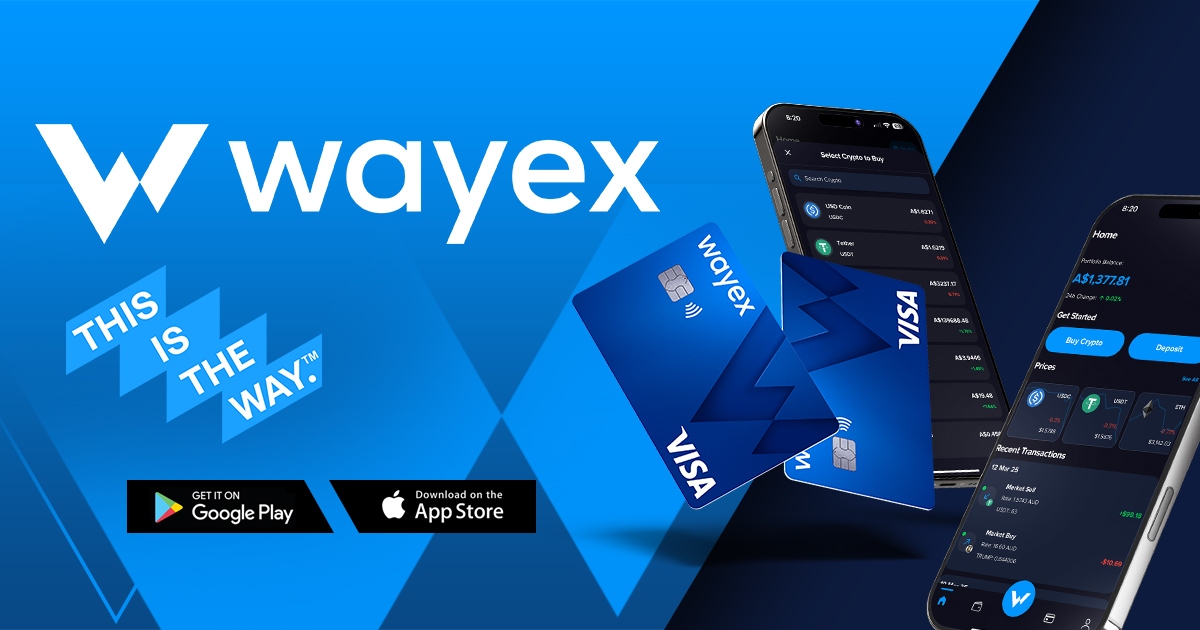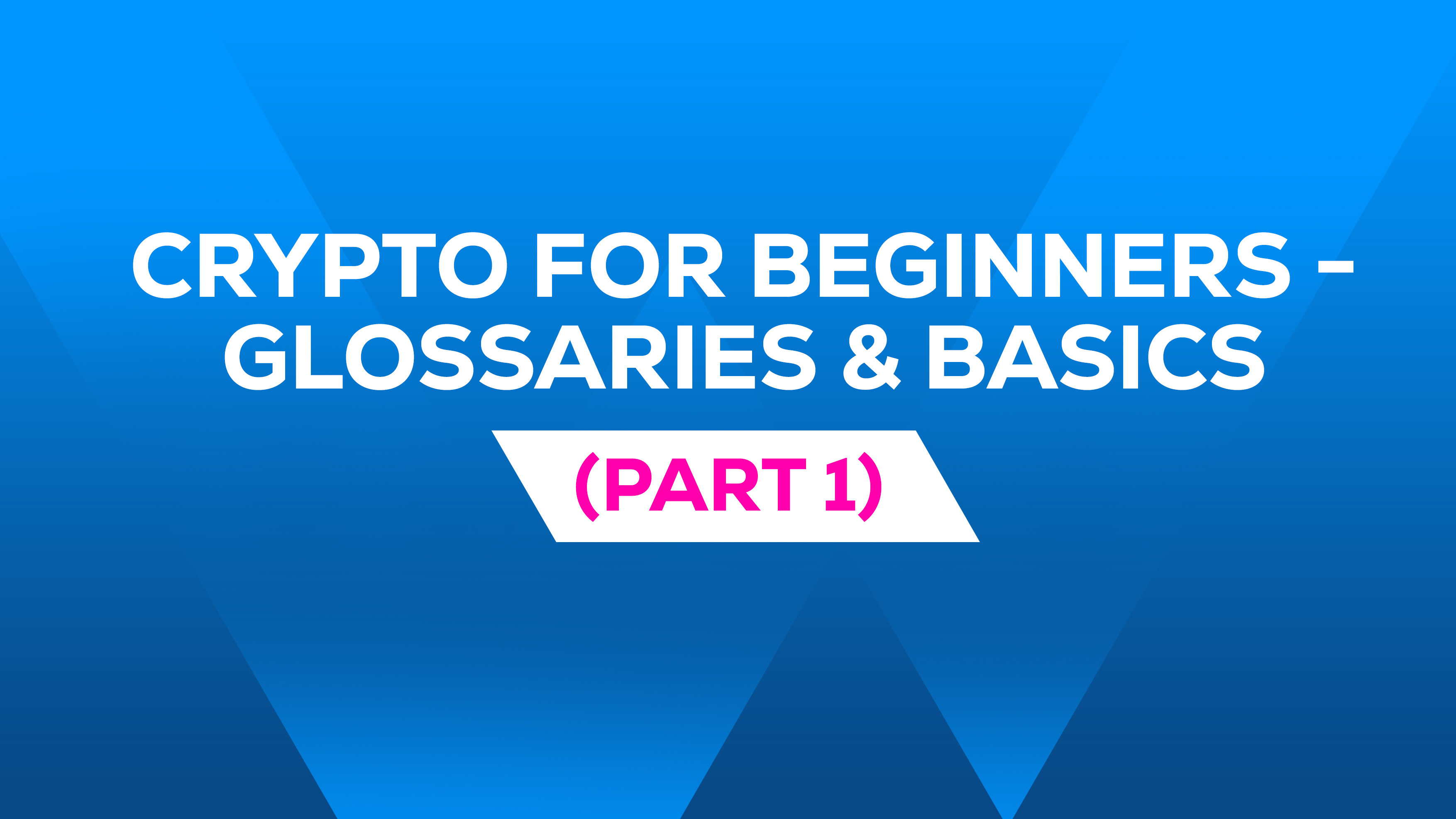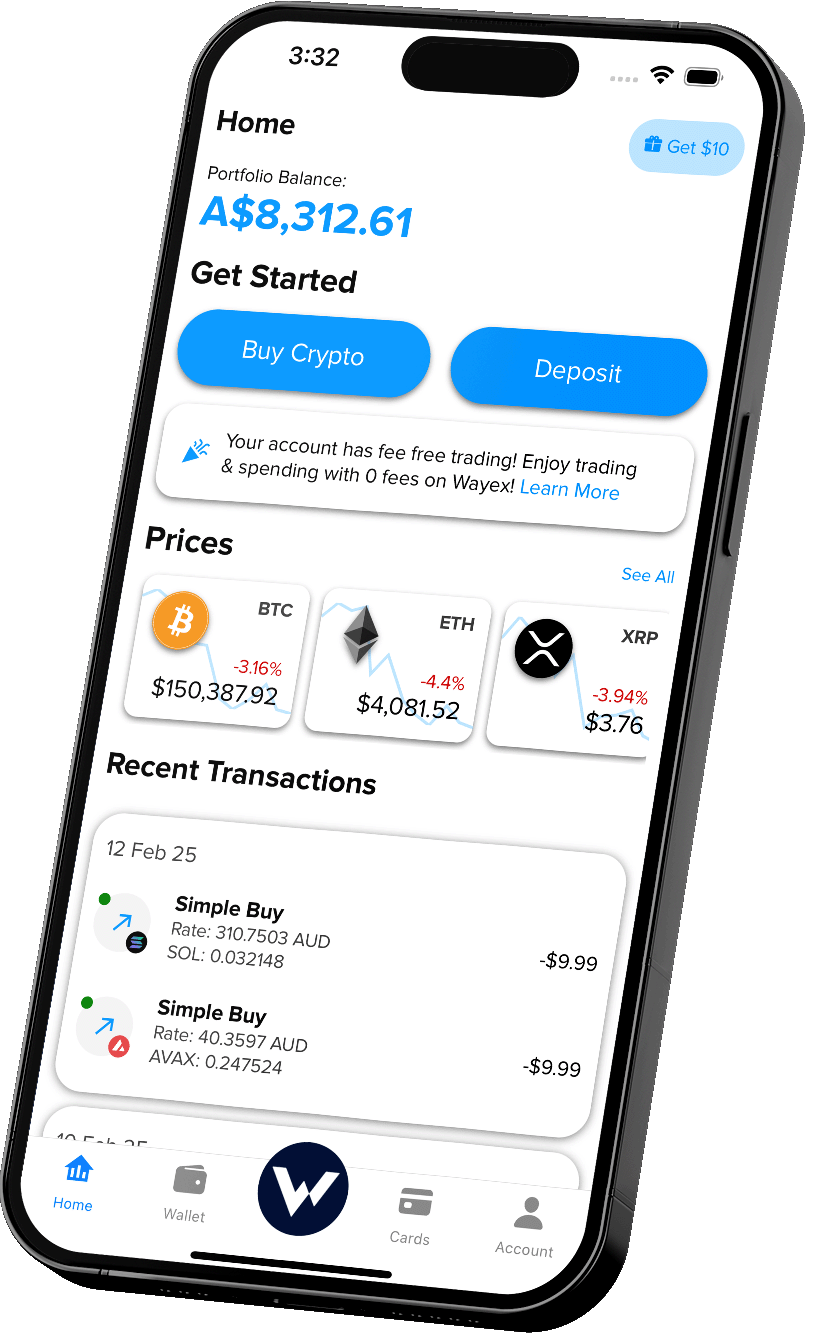Getting Started
If you are new to crypto, you’ve probably heard a few terms thrown around that sound confusing.
Terms like “blockchain,” “wallet,” “stablecoins,” and maybe even “HODL”.
Honestly, it can feel like you’re learning a new language, because, quite frankly, it is.
Cryptobros throw around terms like it’s a sixth sense, which can be really intimidating if you are just starting.
However, like with any new skill, all you need to do is learn and practice to start flexing those crypto trading skills.
Just remember this: there was a time when you didn’t know what crypto was, and now you are here.
To get started on flexing those crypto muscles, learning the basics of tokens, like the difference between Bitcoin and Ethereum, and crypto jargon, is important.
All journeys have a beginning and an ending. For jumping into crypto, it’s important to start at the beginning.
Building up your foundation through understanding and knowing key terms will help you feel confident when reading the news, chatting with mates, or even making your first trade.
And to help you on the journey, we have developed this guide that will walk you through 10 essential terms that every beginner should know.
1. Blockchain
A blockchain is the core technology behind cryptocurrency.
It is a type of digital ledger, or record book, that stores information in a secure and transparent way.
Instead of being controlled by a single bank, company, or government, a blockchain is decentralised.
What does decentralised mean? It means that the system is maintained by a network of computers all over the world.
Think of it like a public record book or Google Sheet that everyone can see but no one can secretly change.

Every time a new transaction happens, whether someone buys Bitcoin, sends Ethereum, or records data, it is added to a “block”.
Once a block is full, it gets linked to the previous block, forming a continuous “chain” of records. This is why it is called a blockchain.
Because every block is connected and verified by the network, it’s nearly impossible to go back and change past records. This makes blockchain technology highly secure, transparent, and trustworthy.
In short, blockchain is the foundation of crypto. Without it, digital currencies would not exist.
2. Cryptocurrency (Crypto)
Crypto is digital money that lives on the blockchain.
You can trade it, spend it, or hold it.
Popular examples include Bitcoin, Ethereum, Solana, XRP and Dogecoin.
Coins vs Tokens vs Crypto
Cryptocurrency (Crypto) is the umbrella term for all digital money that runs on a blockchain.
Just like “fiat currency” covers AUD, USD, or EUR, “crypto” covers everything from Bitcoin to Ethereum to Dogecoin.
- Coins are cryptocurrencies that run on their own blockchain.
- Example: Bitcoin runs on the Bitcoin blockchain.
- Example: Ethereum runs on the Ethereum blockchain.
- Other coins include Solana and XRP.
- Example: Bitcoin runs on the Bitcoin blockchain.
- Tokens are cryptocurrencies that run on an existing blockchain instead of having their own.
- Example: USDT (Tether) is a token built on Ethereum.
- Example: Many DeFi projects issue tokens on blockchains like Ethereum or Solana.
- Example: USDT (Tether) is a token built on Ethereum.
In simple terms, all coins are crypto, but not all cryptos are coins. Some are tokens.
Analogy: Think of it like transport.
- Crypto = all vehicles.
- Coins = cars with their own engines (their own blockchain).
- Tokens = passengers riding on someone else’s engine (an existing blockchain).
3. Bitcoin (BTC)
The first and most famous cryptocurrency, often called “digital gold.”
Many investors see Bitcoin as a store of value, similar to gold, but in digital form.
Unlike dollars or Australian currency (AUD), there will only ever be 21 million Bitcoin created.
This limited supply is one of the main reasons people believe Bitcoin can protect against inflation.
Bitcoin transactions are recorded on the Bitcoin blockchain, a public and secure digital ledger.
You can use Bitcoin to send money globally, trade it on exchanges like Wayex, or hold it long-term as part of your investment portfolio.
4. Ethereum (ETH)
The second-largest cryptocurrency, known for powering “smart contracts.”
These are like automatic agreements that run on the blockchain.
Beyond being a currency, Ethereum is also a platform.
Developers use it to build dApps (decentralised applications), power NFTs (digital collectibles), and run DeFi projects (decentralised finance platforms for lending, borrowing, and trading).
Every transaction on Ethereum requires a small fee called “gas,” which helps keep the network running.
Because of its flexibility, many in the crypto world see Ethereum as the foundation for the next generation of internet services.
5. Altcoin
Any coin that isn’t Bitcoin. This includes Ethereum, XRP, Solana, Dogecoin and thousands more.
Not all altcoins are created equal.
Some are serious projects with strong teams, real-world use cases, and large communities.
Others are more speculative and can rise or fall quickly in value.
Explore popular altcoins on Wayex: Buy Ethereum, Buy XRP, Buy Solana, Buy Dogecoin.
6. Wallet
A crypto wallet is where you store your digital money.
It holds the key that gives you access to your cryptocurrency, letting you send, receive, and manage your coins.
On Wayex, your wallet is custodial, meaning Wayex keeps it safe for you.
Similar to how a bank holds your money but still lets you access it whenever you need.
This is the easiest and safest option for beginners.
You can also use non-custodial wallets like Metamask, where you control everything yourself.
With these wallets, you hold your own private keys and seed phrases.
That gives you complete control, but with total independence comes full responsibility. If you lose your keys, you lose access to your funds.
7. Private Key / Seed Phrase
Your private key is like the PIN to your crypto wallet.
It’s a unique string of numbers and letters that proves you own your coins and lets you move them.
Whoever has the private key has control over the crypto.
A seed phrase (sometimes called a recovery phrase) is a set of backup words generated when you first set up a non-custodial wallet.
This phrase is the master key to your wallet.
If you lose your device or forget your password, the seed phrase allows you to recover your funds.
Important: If someone else gets access to your private key or seed phrase, they can take your funds. And unlike forgetting the PIN to your bank card, there’s no “forgot password” button in crypto. Once it’s gone, it’s gone.
8. Exchange
An exchange is where you buy and sell crypto, just like a stock market for digital money.
Exchanges make it easy to turn fiat currency (like AUD) into crypto, and back again.
They provide price charts, order books, and tools that let you trade just like you would on a financial market.
There are two main types of exchanges:
- Centralised exchanges (CEXs): Run by a company that manages the platform and holds your funds. Examples include Wayex, Swyftx, and CoinSpot.
- Decentralised exchanges (DEXs): Operate without a central company. Instead, they let users trade directly with one another on the blockchain. Examples include Uniswap and PancakeSwap.
→ Start trading on Wayex and enjoy zero fees for 30 days.

9. Stablecoin
A stablecoin is a type of cryptocurrency that’s designed to stay stable in price.
Unlike Bitcoin or Ethereum, which can go up and down quickly, stablecoins are usually tied (or “pegged”) to a real-world asset such as the US dollar or Australian dollar.
For example:
- USDT (Tether): Pegged to the US dollar
- USDC (USD Coin): Another popular dollar-backed stablecoin
Because stablecoins aim to hold their value at 1:1 with fiat currency, they are often used as a safe place to keep money during volatile markets. Traders use them to move quickly between coins without cashing out to a bank account.
There are different types of stablecoins:
- Fiat-backed stablecoins: Backed by real reserves like dollars in a bank (e.g. USDC).
- Crypto-backed stablecoins: Backed by other crypto assets (e.g. DAI).
- Algorithmic stablecoins: Use software and supply-demand mechanisms to maintain price (riskier and less common).
10. Fiat Currency
Fiat currency is the term for regular government-issued money, like the Australian dollar (AUD), US dollar (USD), or euro (EUR).
Unlike cryptocurrency, fiat money is not backed by a physical asset such as gold.
Its value comes from government regulation and people’s trust in it.
In Australia, you’ll use AUD to buy your first crypto on exchanges like Wayex.
Fiat is what bridges the traditional financial system with the world of digital assets.
Final Thoughts
Understanding these 10 terms is your first step towards making crypto less confusing and more approachable.
With this foundation, you’ll be able to read headlines, join conversations, and use apps like Wayex with more confidence.
Stay tuned for Part 2, where we’ll cover more terms like gas fees, HODL, and NFTs.
These are the lingos that traders and enthusiasts use every day.
Ready to put your new knowledge into action? Start with the basics:
**All information in this article is for informational purposes only. You should not construe any such information or other material as legal, tax, investment, financial, or other advice. Nothing contained herein shall constitute a solicitation, recommendation, endorsement, or offer by Wayex to invest, buy, or sell any coins, tokens, or other crypto assets. Any descriptions of Wayex products or features are merely for illustrative purposes. Past performance is not a guarantee or predictor of future performance. The value of crypto assets can increase or decrease, and you could lose all or a substantial amount of your purchase price. It is essential for you to do your research and due diligence to make the best possible judgement, as any purchases shall be your sole responsibility.










